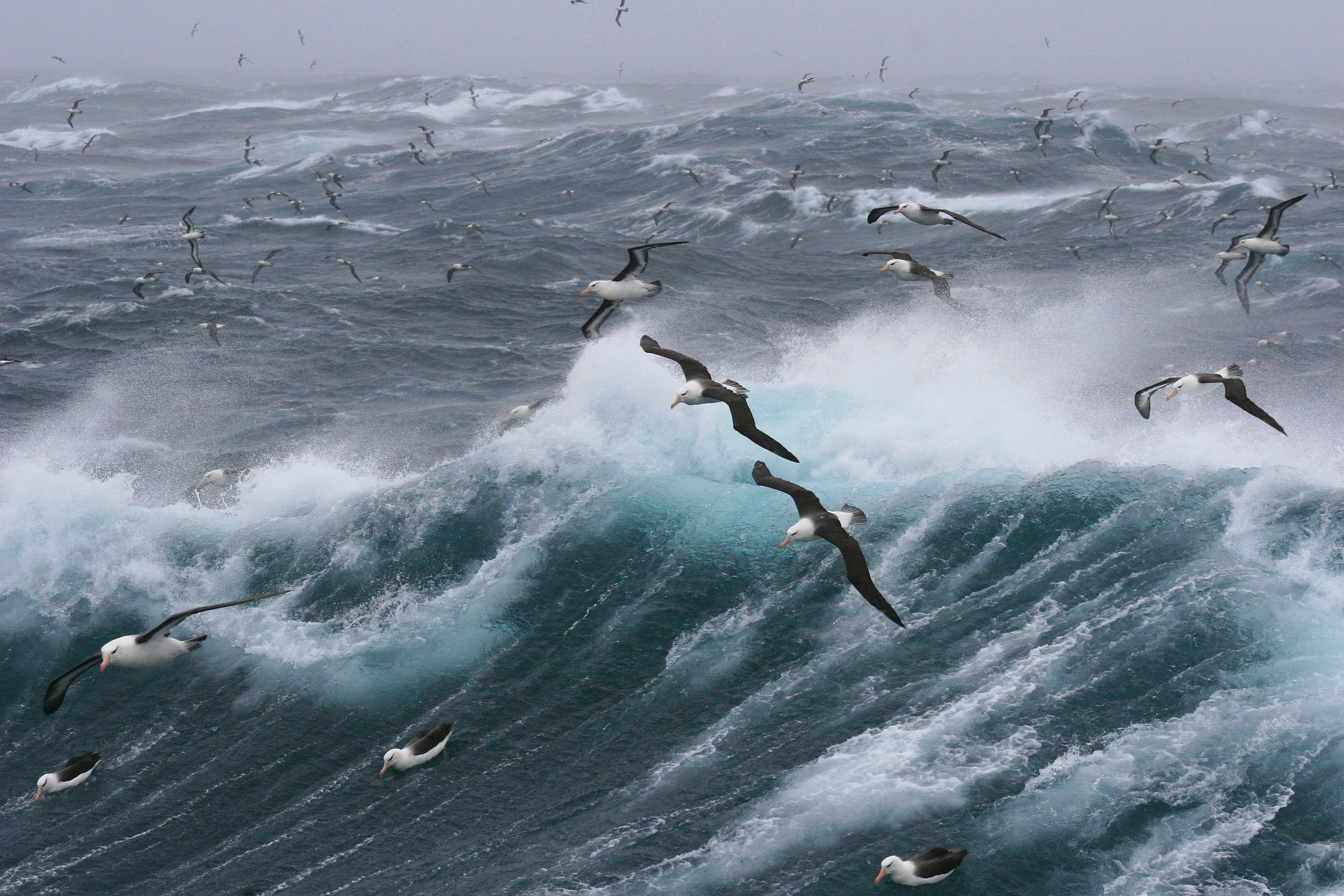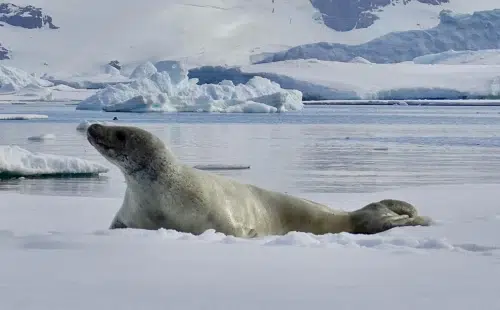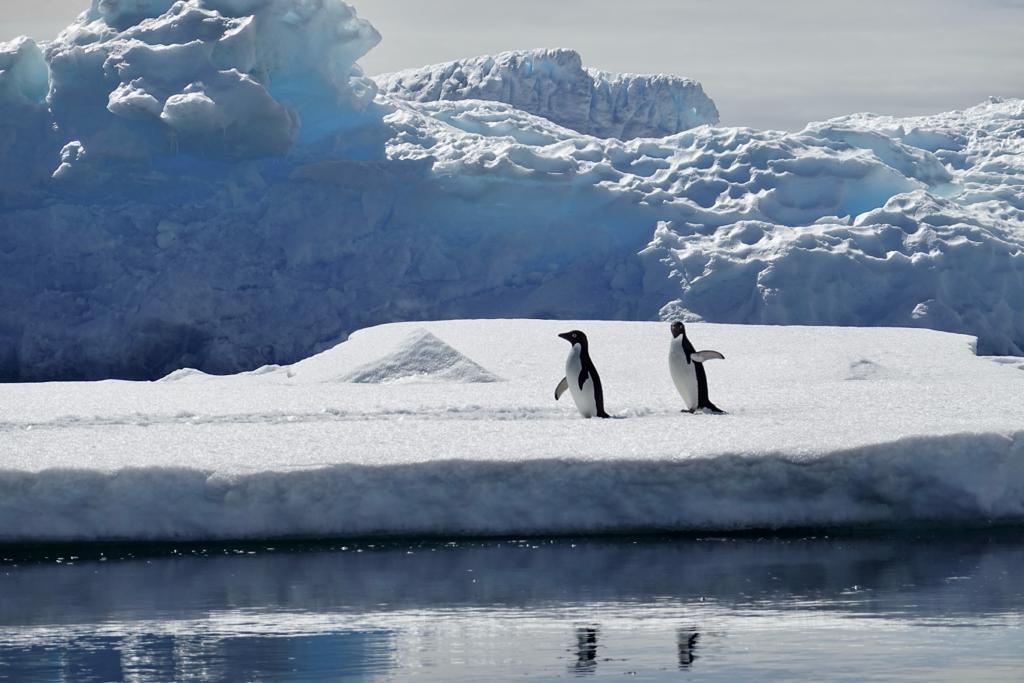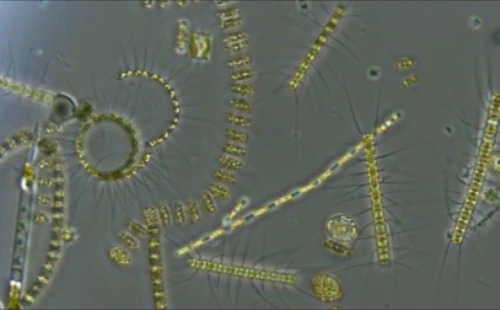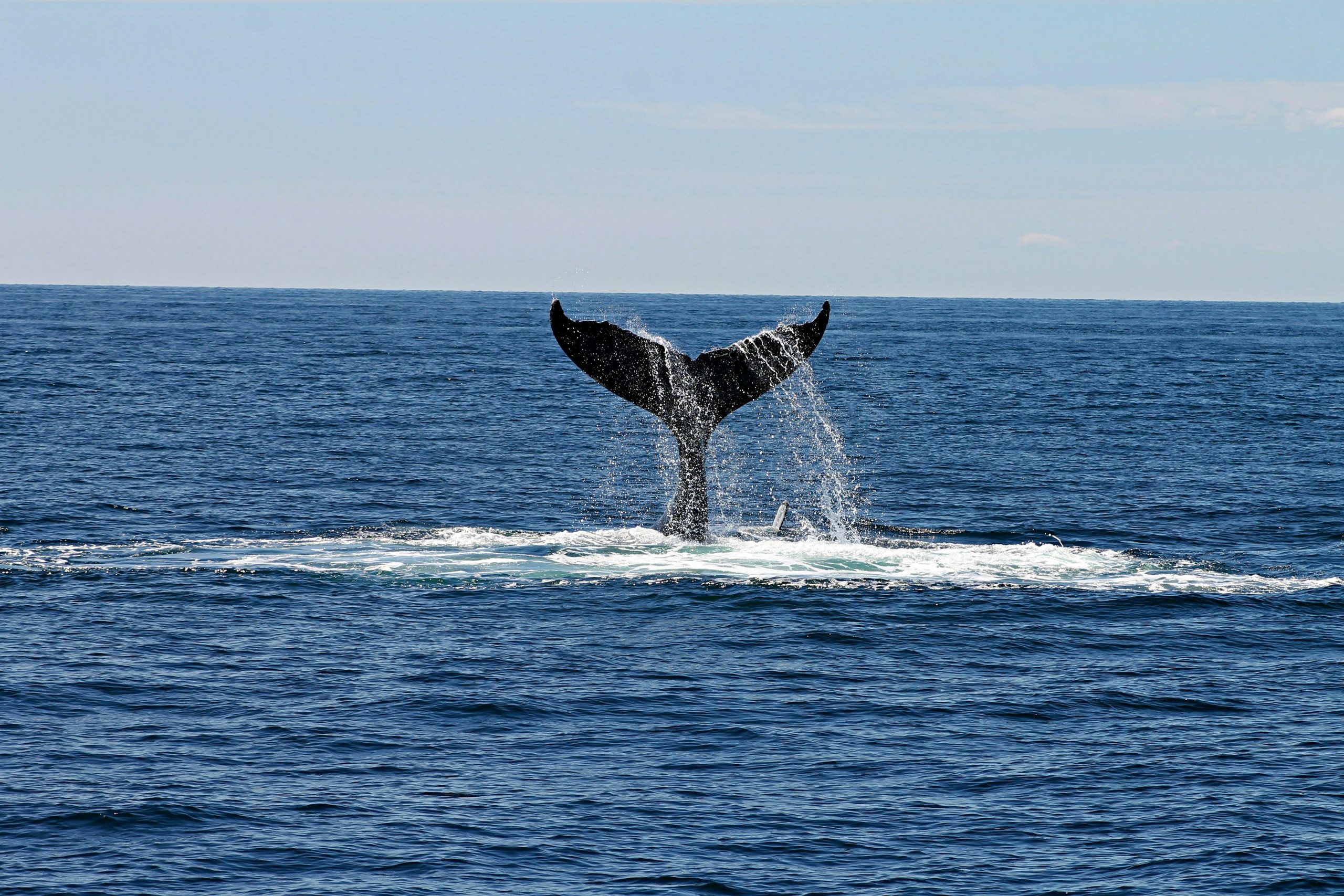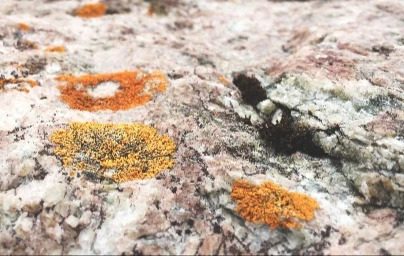Terrestrial Life on the Antarctic Peninsular
The Antarctic Peninsula’s terrestrial life includes an array of highly adapted organisms, primarily mosses, lichens, algae, and fungi. These hardy species withstand low temperatures, intense UV radiation, and scarce water, forming the backbone of the region’s ecosystems. While most habitats support diverse vegetation, Antarctica’s harsh environment restricts flora and other life forms to only the most specialised organisms.
Mosses
Mosses are among the few non-vascular plants that survive the Antarctic Peninsula’s harsh conditions. Common species, such as Bryum argenteum and Ceratodon purpureus, grow in dense mats or cushions. This protects against moisture loss and cold winds. They absorb moisture primarily from snowmelt and grow slowly, often taking years to establish colonies. Mosses reproduce via lightweight spores, which disperse on the wind, though they can also regenerate through fragmentation when pieces break off and form new colonies under suitable conditions.
Lichens
Lichens, symbiotic associations between fungi and photosynthetic organisms (algae or cyanobacteria), are especially well-suited to Antarctica’s conditions. Over 100 lichen species are found on the Peninsula, with species like Usnea antarctica and Umbilicaria antarctica able to tolerate nutrient-poor, exposed environments. Lichens grow extremely slowly but survive desiccation, UV radiation, and freezing temperatures, making them exceptionally hardy. They reproduce both sexually and asexually, spreading fragments to establish new colonies in suitable conditions.
Algae
Algae represent another essential component of Antarctic terrestrial life, with species that thrive in snow, soil, and rock crevices. Green and red algae are common, particularly in snowfields where they form pigmented blooms, known as “watermelon snow” due to its pinkish colour. These algae play a role in nutrient cycling and support small microbial communities.
Soil and rock-dwelling algae survive harsh conditions by forming protective biofilms, which reduce moisture loss and allow them to photosynthesise even in low light. Algal blooms contribute to the Antarctic food web, as some small invertebrates and microorganisms depend on them as a food source.
Fungi
Fungi, though less visible, are crucial to Antarctic ecosystems. They occur as decomposers in soil and rock surfaces, breaking down organic material and recycling nutrients back into the environment. Some fungi exist in symbiosis with algae or cyanobacteria as lichens, while others live independently in soil and rock.
Antarctic fungi are highly tolerant of extreme conditions, and many species can survive freezing and desiccation. Their role in breaking down organic matter is essential, especially in nutrient-poor soils, where fungi contribute to soil formation and stability.
Bacteria and Microbial Life
Antarctica also supports unique bacterial and microbial life, particularly in soils, rock surfaces, and cryoconite holes on glaciers. These microbes, including extremophiles, can withstand freezing, UV radiation, and high salinity levels. Cyanobacteria, for instance, are crucial in soil and aquatic ecosystems, providing nitrogen through nitrogen fixation. Microbial life contributes significantly to nutrient cycling, supporting larger organisms and helping establish soil structures. Some bacteria even live endolithically—within rocks—where they form biofilms that help weather rock surfaces, contributing to soil formation over time.
Terrestrial Flora in the Antarctic Peninsula
Compared to the Antarctic mainland, the Peninsula has relatively milder conditions, which support a greater abundance and diversity of terrestrial life. Mosses, lichens, algae, and fungi thrive in coastal zones and rocky outcrops, where they establish themselves in microhabitats that provide critical resources.
Ecological Roles of Terrestrial Life in Antarctic Ecosystems
Each of these organisms- mosses, lichens, algae, fungi, and bacteria, plays a fundamental role in the Antarctic Peninsula’s ecosystems:
– Soil Formation and Stabilisation: Mosses, lichens, and microbial communities help break down rock surfaces through biological and chemical processes, creating soil and enabling other organisms to establish themselves.
– Nutrient Cycling: Terrestrial life on the Peninsula captures and recycles critical nutrients, such as nitrogen and carbon. By storing and gradually releasing these nutrients, they support the limited food web that sustains life in Antarctica.
– Microhabitats: Mosses, lichens, and algae form mats and biofilms that provide habitats for invertebrates, nematodes, and various microbes. These organisms contribute to nutrient cycling and support other life forms within the Antarctic terrestrial ecosystem.
Adaptations to Antarctic Conditions
The survival of terrestrial life on the Antarctic Peninsula depends on specialised adaptations:
– Desiccation Tolerance: Many species, including mosses, lichens, and algae, can survive extreme dehydration. This adaptation allows them to endure prolonged dry periods and resume metabolic activities quickly when moisture is available.
– UV Protection: High UV radiation in Antarctica can damage cells. Many lichens and algae produce protective pigments, while mosses use compact growth forms to minimise UV exposure.
– Cold Tolerance: Organisms here have biochemical adaptations to protect cellular structures and sustain metabolic activity in freezing conditions. These adaptations allow them to grow even in near-freezing temperatures.
The Resiliance of Nature
The Antarctic Peninsula’s terrestrial life, from mosses and lichens to algae, fungi, and bacteria, exemplifies resilience in one of Earth’s harshest climates. Mosses and lichens thrive in moist, nutrient-rich areas, while algae, fungi, and bacteria occupy a range of habitats, contributing to nutrient cycling, soil formation, and ecosystem stability.
The presence of these organisms supports the limited terrestrial food web and underscores the adaptability of life in extreme environments. Conservation efforts remain essential to preserving these unique ecosystems, offering insights into how terrestrial life can withstand, and even thrive amid the environmental changes in Antarctica.
Additional resources
There isn’t a lot of readily available information on the internet that isn’t related to scientific journals, but the Australian Antarctic Program has some background information.

